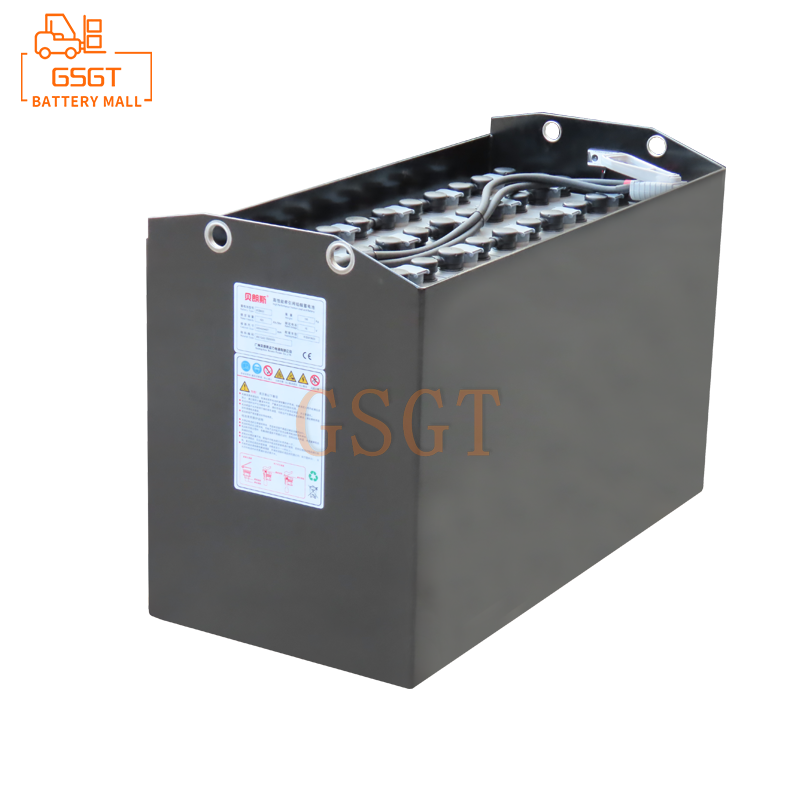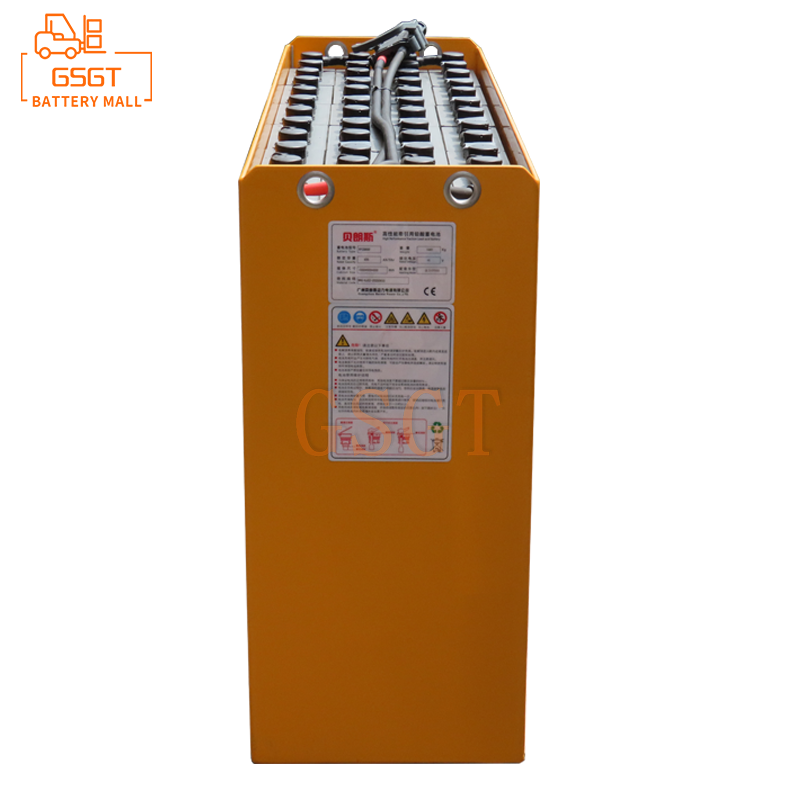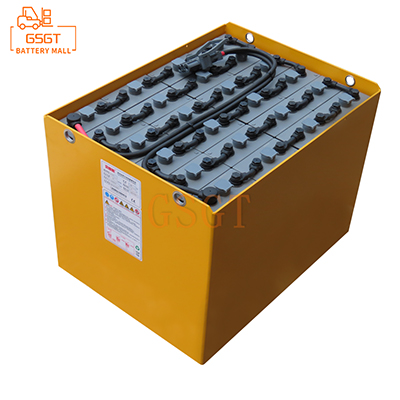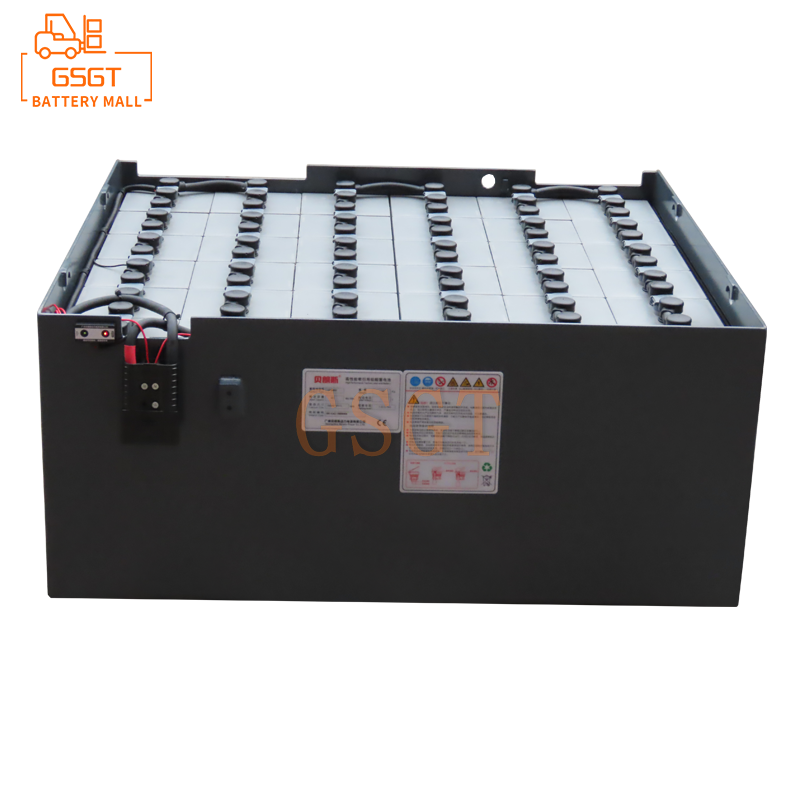Time:2025-04-18 09:49:06
Browse:604
In fields such as logistics and warehousing, and factory handling, forklifts are indispensable important equipment. As the power core of forklifts, lead-acid batteries directly affect the working performance and operating costs of forklifts. However, there are a wide variety of lead-acid battery products for forklifts on the market, with varying qualities. How can one select a suitable product and avoid various traps? This article will provide you with a detailed interpretation.
1.Clarify the forklift requirements and match the battery parameters
(1) The voltage must be precise
Different models of forklifts have specific requirements for battery voltage, with common ones including 24V, 36V, 48V, etc. If a battery with the wrong voltage is selected, it will not only fail to provide power for the forklift normally, but also may damage the electrical system and the battery itself of the forklift. Be sure to check the user manual or equipment nameplate of the forklift, as the required battery voltage will be clearly marked on it. For instance, a certain small electric pallet truck might require a 24V battery, while a large counterbalanced forklift might need a 48V or even higher voltage battery.
(2) The capacity should be compatible
The battery capacity (Ah) determines the working duration and load capacity of a forklift after a single charge. Generally speaking, the greater the operation intensity of a forklift, the longer the working time, and the heavier the goods it transports, the greater the battery capacity required. If the capacity is too small, the forklift is prone to insufficient power during operation, and frequent charging will affect work efficiency. If the capacity is too large, it will not only increase the procurement cost, but also may not be suitable for installation in the battery compartment of the forklift due to the excessive volume and weight of the battery, and even affect the handling performance of the forklift. Take a forklift that works 8 hours a day and frequently transports 2 to 3 tons of goods as an example. It may require lead-acid batteries with a capacity of around 400Ah to 600Ah.
(3) The size and specification should be appropriate
The size of the forklift battery compartment is fixed. Before purchasing batteries, the length, width and height of the battery compartment must be accurately measured. At the same time, pay attention to whether the shape and connection method of the battery are compatible with the forklift. Some forklifts may adopt specific battery connection interfaces or layouts. If the battery does not match them, the installation process will be extremely difficult, or even impossible to install. One cannot merely refer to the previously used battery size, as there may be more suitable battery models to choose from, and new battery technologies may offer higher capacity in the same volume.
2.Gain a thorough understanding of battery performance and do not be deceived by false advertising
(1) Cycle life is very crucial
Cycle life refers to the number of times a battery can be charged and discharged under normal usage and charging conditions. This is an important indicator for measuring the durability of batteries. The cycle life of high-quality lead-acid batteries for forklifts is usually around 1,500 times, but some products on the market may exaggerate their promotion. For instance, some unscrupulous merchants claim that their battery cycle life can reach over 2,000 times, but in actual use, it is far from achieving this. The actual cycle life of the battery can be understood by referring to the technical data of the product, user reviews, or consulting professionals. Generally speaking, batteries made from high-quality raw materials and advanced manufacturing processes have relatively longer cycle lives.
(2) The charging acceptance capacity should be taken into consideration
The charging acceptance capacity reflects how quickly a battery can accept the charging current. A good battery can be fully charged in a relatively short time, reducing the downtime of forklifts. Some low-priced batteries may perform poorly in terms of charging acceptance. Even when using high-power chargers, the charging time will be very long. This not only affects work efficiency, but also may cause the battery to overheat due to long-term high-current charging, shortening the battery life. When making a purchase, you can ask about the battery's charging characteristics to understand its performance under different charging conditions. For instance, some high-end lead-acid batteries adopt special plate designs and electrolyte formulas, which can significantly enhance the charging acceptance capacity and achieve fast charging.
(3) Low-temperature performance should be given due attention
If forklifts frequently operate in low-temperature environments, such as cold storage facilities, the low-temperature performance of the battery becomes particularly important. In low-temperature environments, the viscosity of the electrolyte in lead-acid batteries will increase, and the ion diffusion rate will slow down, resulting in a decrease in battery capacity and an increase in internal resistance. Both charging and discharging performance will be affected. Some batteries perform well at normal temperatures but fail to function properly in low-temperature environments. Therefore, for forklifts operating in low-temperature environments, batteries with good low-temperature performance should be selected. These batteries usually employ special electrolyte additives or improved plate materials to enhance their performance at low temperatures. For instance, some brands of batteries can still maintain a high capacity output in an environment of -20 ℃, meeting the normal operation requirements of forklifts in cold storage.
3.Pay attention to battery quality and brand, and stay away from "three-no" products
(1) Check the production process and quality certification
High-quality lead-acid batteries for forklifts are produced using advanced techniques and a strict quality control system. For instance, the manufacturing process of the plates can affect the capacity and lifespan of the battery. Using high-quality lead-calcium alloy plates can enhance the battery's corrosion resistance and charge and discharge performance. At the same time, regular battery products should have relevant quality certifications, such as CE certification, UL certification, etc. These certifications are recognitions of battery safety, performance and other aspects. Products without quality certification, known as "three-no" products, often cannot guarantee their quality and safety. During use, there may be potential safety hazards such as leakage and fire.
(2) Choose well-known brands and reliable suppliers
Well-known brands usually have a good reputation and rich production experience in the industry. They pay more attention to product quality and brand image, and can provide more reliable products and after-sales services. At the same time, choose reliable suppliers and avoid purchasing batteries from some small workshops or unknown channels. Reliable suppliers can provide regular product channels, detailed product information and professional technical support. Problems encountered during the purchasing process can also be solved in a timely manner.
4.Attach importance to after-sales service and ensure the right to use
(1) The warranty terms should be clear
When purchasing batteries, be sure to read the warranty terms carefully to clarify the warranty period, warranty scope and warranty conditions. The warranty policies for batteries of different brands and models may vary. Some may only cover certain components of the battery, while others may have specific requirements for the usage environment, charging methods, etc. For instance, some batteries have a warranty period of 1 to 2 years under normal use and maintenance. However, if the battery is damaged due to the user's improper operation, it is not covered by the warranty. Make sure you clearly understand these terms to avoid disputes with merchants when problems arise.
(2) After-sales support should be prompt
High-quality after-sales service not only includes warranty but also timely technical support and maintenance services. When the battery malfunctions, it is crucial to be able to receive prompt repair support from professionals. Choose those brands and suppliers that have after-sales service outlets locally or can provide prompt on-site repair services. For instance, some large battery brands have after-sales service centers all over the country. When users encounter problems, they can call the customer service hotline to receive professional repair guidance or on-site repair services in a short time, minimizing the downtime of forklifts and reducing the impact on production and operation.
5. Reasonably assess prices to avoid the trap of low prices
(1) Be cautious if the price is too low
The prices of lead-acid batteries for forklifts on the market vary greatly. Batteries with excessively low prices often have quality issues. These low-priced batteries may cut corners in the use of raw materials, using inferior plates, electrolytes, etc., resulting in poor battery performance and short lifespan. Although the purchase price is low, frequent battery replacement during subsequent use will increase the overall cost and also affect work efficiency.
(2) The comprehensive cost should be taken into consideration
When choosing batteries, one should not merely focus on the purchase price but also comprehensively consider the usage cost, including charging cost, maintenance cost, replacement cost, etc. Although high-quality batteries have a relatively high purchase price, due to their excellent performance and long lifespan, their overall cost may be lower during long-term use. For instance, some high-performance lead-acid batteries, although they have a relatively high unit price, have a long cycle life, high charging efficiency, can reduce the number of charges and electricity expenses, and also have lower maintenance costs during use. In the long run, they are more cost-effective.
When choosing lead-acid batteries for forklifts, multiple factors need to be comprehensively considered, ranging from clarifying the forklift's requirements to paying attention to battery performance, quality, brand, after-sales service and price, etc. Only by carefully choosing during the purchasing process and avoiding various traps can one select batteries with excellent performance, reliable quality and high cost performance, providing a strong guarantee for the efficient and stable operation of forklifts.

$2450

$3810

$3405

$4045

MESSAGE
Professional And Efficient
Security
Affordable Price
Professional Services